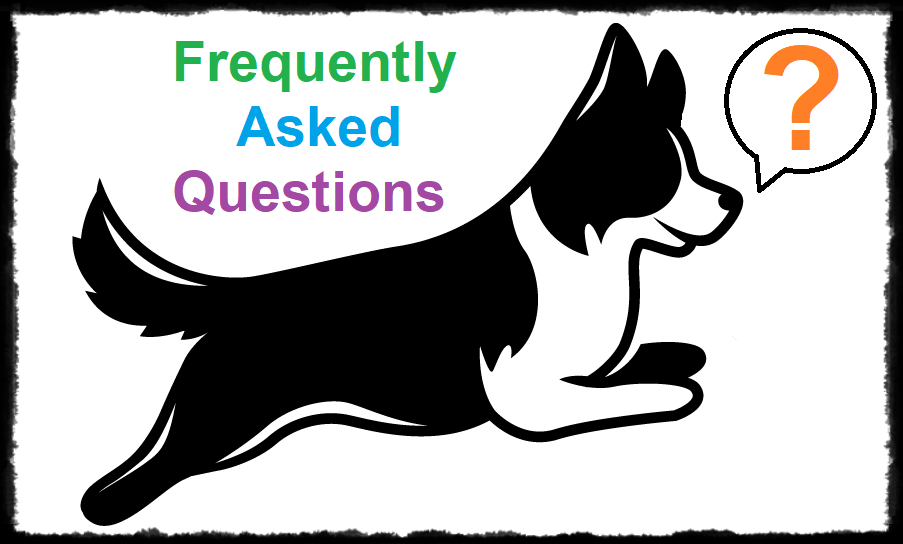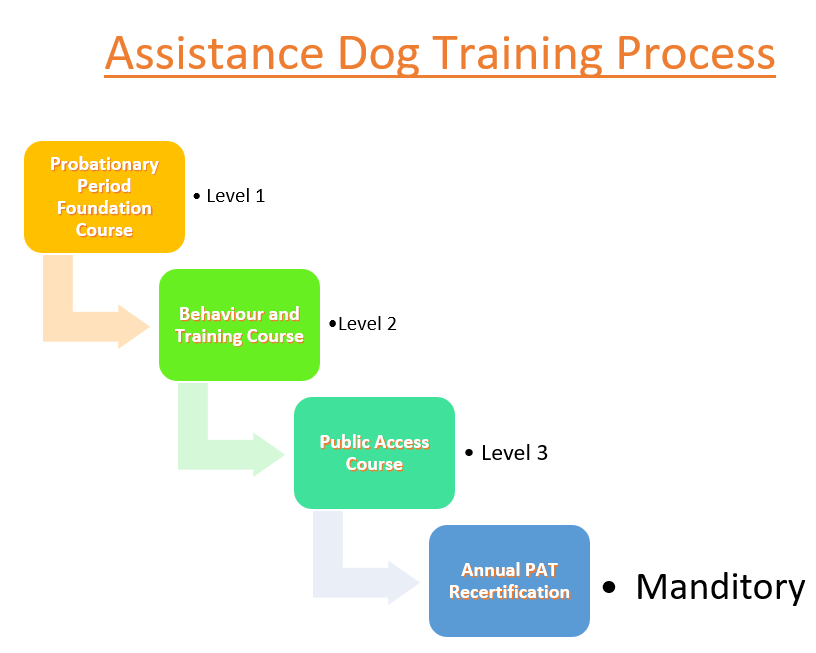
What Makes This Perth Dog Trainer Different?
I train you (handling skills) and your dog (all breeds and ages) wherever it is needed. In other words, I teach dog owners the skills to improve their relationships with their dogs and to keep them safe in their home and out in the community.
This will include sessions in your home and other locations…whatever environment your dog needs. I am particularly interested in preparing puppies (Puppy Socialisation Parties for those under 16 weeks old) and working with those dogs who are easily stimulated or have exceptionally high drives.
All potential clients are encouraged to book in for a 30-minute free Phone Consultation before coming to any decisions. Don’t worry; there is no obligation for you to sign up right then and there. After the phone consultation, we can decide whether a Behavioural Assessment (BA) is required or start training right away. If a BA is required, the Behavioural Assessment Questionnaire will need to be filled out beforehand, and there is a nominal charge of $85. The results of the BA will give me the information I need to either design and quote you for training or refer you to an allied professional.
I work by appointment only. I offer phone, Zoom or face to face appointments, and you can book these via my Booking page. My schedule includes after hours and weekends.
I have trained with other trainers before, with minimal success; why should I train with you?
There is no one-size-fits-all with dog training. This is a relationship-based process, and there are three relationships to be considered here. Your relationship with your dog. My relationship with your dog (my ability to empathise with and identify where assistance is needed). My relationship with you (my ability to communicate what is necessary with you effectively). The odds are both ends of the lead will require education and training. My ability to speak both human and canine makes me a great mediator. Part of my fact-finding will identify what you have tried in the past and why you thought it did or didn’t work. If you can say all this about the previous trainer(s) you worked with, then I might not be able to help, but if you feel my approach or skills are different, then allow me to help you and your dog
Why choose private lessons instead of board-and-train?
Board and train (B&T) may deliver to you a dog that responds appropriately with that trainer in the settings they have used. Dogs learn ‘in context’ – they associate what they’ve learned with where they were and who was with them at the time of the lesson. They need assistance to ‘generalise’ –to transfer that learning to other situations when they’re with you. After B&T, you still need to work to learn the skills at your end of the leash and re-teach those lessons to your dog to maintain results in your home environment. Why not cut out the middle man, and train at home with private lessons? I would instead empower and educate you so you and your dog reap the benefits! That is why I don’t offer B&T.
Can we meet you before we hire you?
If seeing me is essential to you, we can do our initial free phone consultation via Zoom.
What methods of payments do you take? Do you offer payment plans?
You can pay via direct deposit, cash, or the website for a train as you go lesson. Direct deposit is preferred because it makes it easier with the taxman. Prepayment is preferred but not essential.
For train as you go please see bookings page.
Or you can commit to a ‘program’ for a bulk number of sessions at a reduced rate. I rarely quote programs before meeting with you and your dog. Programs range from $ 900 to $2500.
What training tools and methods do you use?
My entire philosophy is based on the Layered Stress Model. As with all creatures on the planet, we either do something to seek pleasure (positive) or avoid discomfort (negative). In my training, I use both positive and negative motivation and feedback to communicate your lifestyle and desires to your dog. This is referred to as “Balanced Training” or “Reward-first-training”.
“Train the dog and owner in front of you” is my motto; because I have to be flexible enough to accommodate both (or more) parties in this relationship in the present moment. I’m open to all tools that will achieve this. I don’t want to be limited by politics, the “standard” protocol that might have failed in the first place, or the opinions of others who are not involved in the dog’s life. I want to do what is best for both the dog and the owner to achieve results in the most professional, precise, efficient, effective, humane and safe way.
I use both positive motivation (including but not limited to food, markers, praise, touch, exploring and personal play) and negative motivation (including but not limited to spatial, verbal and physical pressure). I am not a positive-only (also known as “force-free”) trainer or dominance-based (also known as “old-school”) trainer. I am a dog trainer who prefers to avoid “labels”, as this only encourages bias and limits open-mindedness.
I misbelieve, safely and humanely using any method or tool in the toolbox to train the dog ‘in front of me’. My choice of tools considers what your dog responds to best, what will get results in a reasonable amount of time and what will be easy to maintain and guarantee lasting results.
Some of the tools I use include tone of voice, body language, flat buckle collar, crate, long-lines, Flexi-leads, prong collar, squirt bottle, verbal markers, food, transition-lead, “bonker”, e-collar/remote training collar, slip lead/collar, muzzle, and martingale collar.
If you are uncomfortable with any of the tools or methods I am recommending, we can discuss alternatives or refer you to another trainer.
Clicker training is a communication method that falls under the marker training umbrella. I prefer verbal markers. The pros of Clicker training is that the noise is consistent and doesn’t convey any emotion. The cons are that you need a free hand and another piece of equipment.
What are my expectations of you as a client?
My expectations are:
- Accountability: I can’t do it for you. I will provide you with the tools, but I expect you to put in the work daily. The training will become part of your lifestyle, and you will create habits. For example, I train my dogs to go onto a bed or raised table before entering my home. Every time they approach the door, they go onto the bed/table first–my consistency has created this habit. I expect that consistency from my clients.
- Communication: Once you are a client, I prefer phone calls (for urgent) or email (for less critical) communication. I do not use text and do not respond to texts. I rely on your transmission. A relationship is only as good as its communication, and I am a terrible mind reader :). Are you unsure of my instructions? Unhappy with something? Confused about anything?–you have to spell it out.
- Teachability: I expect open-mindedness and commitment. Many dog owners say that they have tried everything and been unsuccessful, however on closer examination, I often find they were unwilling to explore specific tools or methods to train their dog. Therefore, they hadn’t ‘tried everything. I understand you may be predisposed to not wanting to use some tools/techniques, but see point 2 above (communicate) and let me explain/demonstrate how they may be effective.
- Honesty: You must keep me appraised of what practice you have or haven’t done. I understand that life happens and disrupts the best of plans, but we can’t progress to the next step without knowing where we are.
What are the differences between Companion-, Therapy- and Assistance dogs?
1. Companion Dogs (pets) provide therapeutic and emotional support to their owners through companionship (where the dog lives). They generally have not been trained to undertake specific, identifiable tasks or behaviours. Ideally, they don’t show aggression or danger to others and can easily be controlled in public areas.
You may want your Companion Dog to satisfy some of the roles an Assistance Dog might. In other words, they can be trained to undertake specific, identifiable tasks to reduce your need for support without having to be certified for public access; I call these Home Helper Hounds (HHH).
2. Therapy Dogs are for professional practices: They support more than one person (strangers or otherwise, but they don’t live with them). They are not required to perform specific tasks. Still, they must be very human affiliated, enjoy being touched/patted, be calm and have NO behavioural problems such as human- and dog reactivity/aggression. No legislation requires a Therapy Dog to be certified for public access; the facility themselves will grant access to a facility. Therapy Dog Handlers should hold public liability insurance and have a risk assessment done for each facility they attend.
3. Assistance Dogs for a primary handler: a fully qualified Assistance Dog or Service Dog has the same public access rights as a Guide Dog for the blind because they undergo the same Public Access Testing (PAT). They will accompany their handler anywhere (including public transport and areas where pets are not allowed). It is illegal for any business to refuse entry to a certified Assistance Dog. However, you may be asked to provide proof of certification. Assistance dogs are trained to perform a range of tasks and behaviours for people with a disability. Some assistance dogs know more than 50 tasks to assist their handler. These dogs also provide therapeutic and emotional support to their handlers through companionship.
If you have a dog already, I may assist you in training that dog to obtain certification as an Assistance Dog. If you don’t have a dog already, I can help you screen possible candidates. Not all dogs will be suitable for the rigorous training required to become certified. Even starting with a purpose-bred dog, failure rates average 70%.
I am in the process of getting accreditation as an Assistance Dog Trainer and Moderator.
Is an Emotional Support Dog (ESD) also recognized as an Assistance, Therapy, or Companion Dog?
No. The term ESD (sometimes ESA) is an American certification and is not recognised under Australian law. ESD’s are not guaranteed access under the Disability Discrimination Act 1992, unlike an Assistance Dog. The term refers to a dog that may support a person through depression, anxiety or another medical condition but does not mean that the animal is specifically trained to do so; instead, they do so merely by their presence.
What breeds are the best to get for a Therapy- or Assistance Dog?
Dog breeds came about as humans purposefully bred them to perform specific tasks such as herding, hunting, and guard, and later, for specific physical characteristics. Dog breeds consistently produce the desired physical traits, movement and temperament developed over decades of selective breeding. This is why certain breeds have historically been used as Assistance Dogs (Golden Retrievers/Labs for Guide Dogs for the Blind, German Shephards for Police Dogs). This does not mean other breeds cannot be successfully used in these roles, but there may be higher failure rates due to breed-specific behaviours. Contact me to discuss.
Can I train my own Therapy or Assistance Dog?
While possible, I suggest you do this with the help of someone who 1) knows dog behaviour and how to train a dog for the tasks you require and 2) who can help you through the process of the Public Access Test. Get in contact as early as possible for a Free Phone Consultation to find out more. Remember there is no guarantee that the puppy/dog you choose will be suitable as a Therapy or Assistance dog, particularly if you need them to pass the Public Access Test (PAT).
What is the Public Access Test (PAT)
The Public Access Test (PAT) is an annual assessment of a dog’s suitability as an Assistance dog accessing public spaces. The PAT indicates the minimum standard that a dog must achieve to be considered safe and effective in accessing public places and public passenger vehicles daily. Each of the nine (9) elements of the PAT must be passed to demonstrate that the dog and the handler perform at the required standard. These are grounds for immediate failure of the PAT:
- A dog that displays inappropriate aggressive and/or reactive behaviour (growling, biting, raising hackles, showing teeth etc.).
- Any dog that urinates or defecates in a building or shows uncontrollable behaviour.
- Any dog that shows a display of guarding of people, territory, possessions or food.
- Due to their actions or behaviour, any dog or handler is likely to bring disrepute, I.E., a lack of respect or loss of good reputation, to the dog, trainer, or training institution.
- Any handler who is harsh on the dog or not willing to abide by all relevant laws.
- A fail mark in any element of the PAT.
How long does it take to train a Therapy- or Assistance Dog?
How long is a piece of string?
As long as it takes to satisfy the requirements detailed above. If you start with a puppy, you have a much better chance of developing their potential, however working dogs don’t start ‘working’ until they are mentally mature, generally between 18-24 months. Learning tasks is not the same as learning how to cope with the daily stress such a role places on them.
How to go about training my own Assistance- or Therapy Dog?
It would be best to get in contact as early as possible for a free 30-minute Phone Consultation. Training pathways for each type of dog are quite different, and I can help you clarify how best to achieve your desired goal. The only difference between training an Assistance Dog and a Therapy/Companion Dog/HHH is that the Assistance Dog is the only one that will need the Public Assess Course or Annual PAT Recertification. See below for a basic flow-chart of this process:
Let’s get training

Do you have drop-in classes?
I do offer drop-in classes after you have finished your programs. Although designed primarily for puppies (from 8 weeks old), they also accommodate dogs up to 18 months old. If your puppy is not yet fully vaccinated, you can still participate-contact me to discuss details. For dogs more than 18 months of age, I offer drop-in social strolls, where we meet at different locations and explore real-life situations under my supervision. Social walks are only available to dogs that have already completed a training program.
